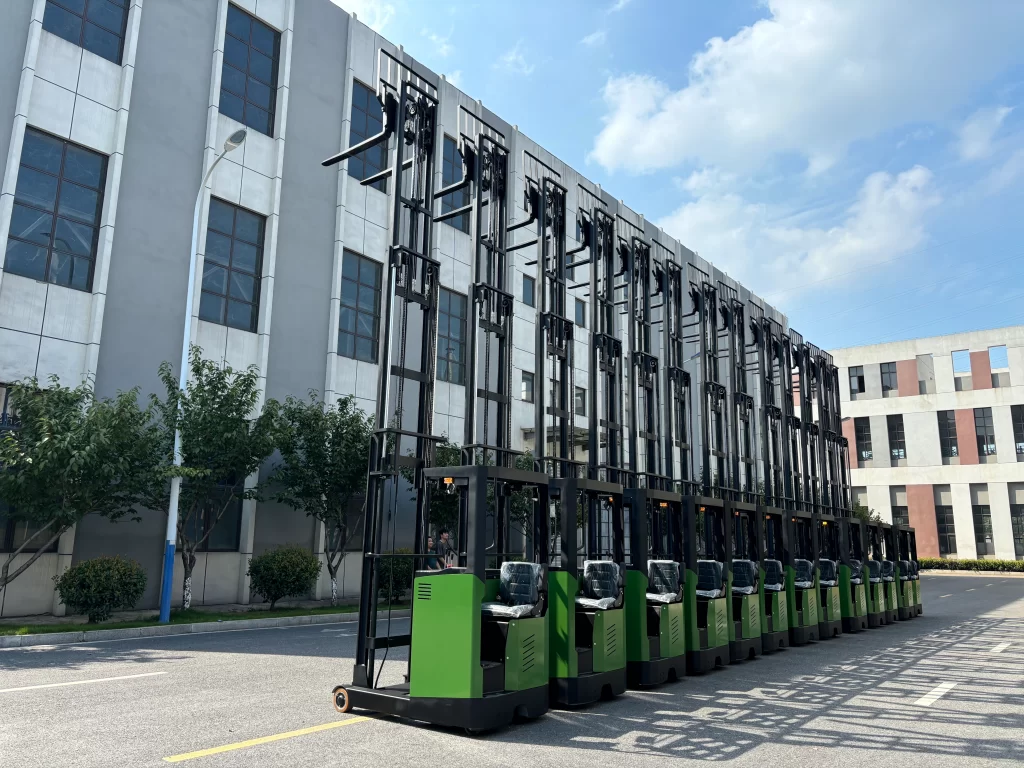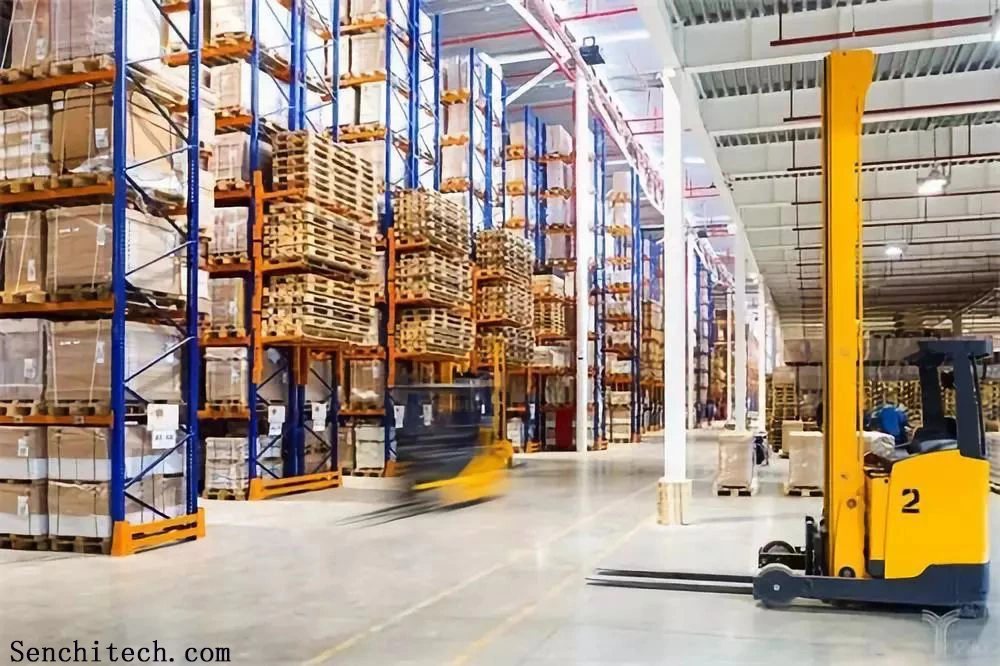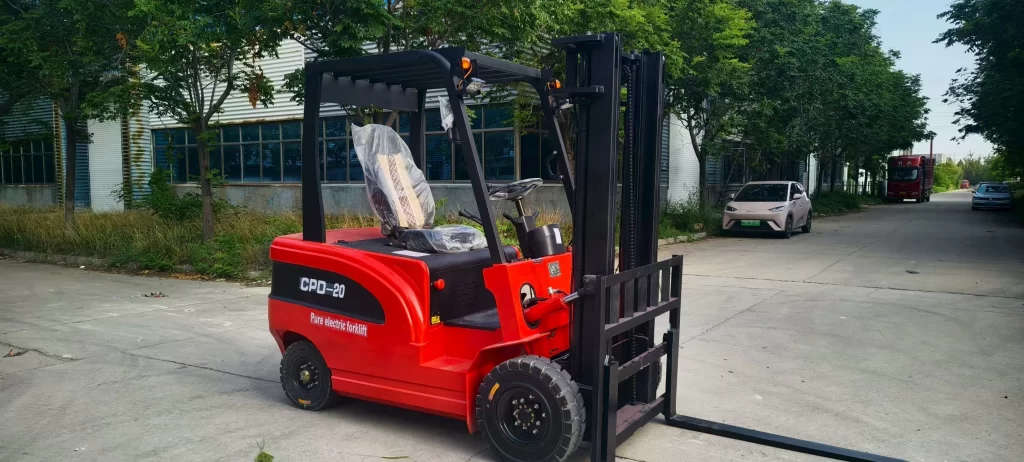What is a warehouse reach truck?
With the growth of the logistics and warehousing industries, choosing the right indoor industrial truck is a crucial issue. The choice of electric forklift manufacturer for your warehouse solution also determines future profitability. This article discusses the main features and classifications of reach trucks, as well as operational precautions, for reference by those working in the warehousing industry.
Reach forklift trucks are industrial handling vehicles, a type of warehouse operation forklifts. They are forward-moving wheeled transport vehicles used for loading, unloading, stacking, and short-distance transport of palletized cargo. They are often used in large warehouses as electric indoor forklifts. They typically use batteries to power their hydraulic systems, fundamentally different from internal combustion forklifts that use diesel or gasoline as power sources. Reach trucks combine the advantages of counterweight electric forklifts and electric stackers, offering features such as environmental friendliness, quiet operation, the ability to lift cargo to extreme heights, a compact working area, and a tight turning radius. In short, a reach truck specifically refers to an electric forklift designed for high-bay warehouses with narrow aisles.

Introduction
Electric reach trucks offer maneuverability, ease of operation, low-noise levels, and are ideal for indoor operations. They combine the advantages of an electric reach truck and a counterbalanced forklift. When the mast is extended to its top, the load’s center of gravity falls outside the fulcrum, acting as a counterbalanced forklift. When the mast is fully retracted, the load’s center of gravity falls inside the fulcrum, acting as an electric reach truck. This combination of features ensures operational flexibility and high load capacity without significantly increasing size or weight, minimizing space requirements and significantly improving land utilization. Therefore, they are suitable for material handling and stacking in confined spaces in industries such as light industry, tobacco, textiles, food, supermarkets, cold storage, warehouses, container handling, electronics factories, hospitals, sanitary equipment transfer, dense warehousing, confined spaces, high-bay warehouses, flammable and explosion-proof locations, and small, densely packed cargo. They are an essential electric lift truck for modern warehousing and a key focus of competition among major forklift manufacturers worldwide.
Warehouse reach trucks share the characteristics of both counterbalanced forklifts and electric reach trucks. When the mast is fully extended, the load’s center of gravity falls outside the fulcrum, making it similar to a counterbalanced forklift. When the mast is fully retracted, the load’s center of gravity falls inside the fulcrum, making it similar to an electric stacker. This combination of features gives this forklift the advantages of operational flexibility and high payload capacity, while minimizing the size and weight of the truck, thus minimizing operational space and significantly improving warehouse space utilization.
Working Principle
The mast or fork carriage of a reach truck can move forward and backward. A reach truck with a mast drives the forks forward, extending beyond the front wheels to pick up or place loads. During operation, the forks retract with the load, keeping the center of gravity within the support plane. A reach truck with a forklift drives the forks forward beyond the front wheels to operate, retracting them within the support plane. Reach trucks have two high, forward-extending outriggers with two wheels at the front. The outriggers ensure stability when carrying a load. Compared to a reach-type forklift, the front wheels are larger and the outriggers are higher, preventing them from reaching under the load during operation. Instead, the mast, carrying the entire lifting mechanism, moves along tracks inside the outriggers. This allows the forks to lift slightly after picking up the load and then retract, ensuring stability during operation. A reach-type forklift’s mast moves forward along tracks inside the outriggers to facilitate picking up the load. After picking up the load, the mast rises to a certain height and then returns to its original position along the tracks inside the outriggers, ensuring excellent stability. This makes it suitable for operations in workshops and warehouses.
A reach-type forklift’s mast moves forward along tracks inside the outriggers, carrying the lifting mechanism, to facilitate picking up the load. After picking up the load, the mast rises a short distance and then returns to its original position along the tracks inside the outriggers.
Warehouse Reach Truck Categories
Stand-Up Reach Trucks
Stand-Up Reach Trucks offer advantages such as zero pollution, low noise, high energy conversion efficiency, and simple and convenient operation. They can perform high-level stacking operations in limited working spaces, a feat unmatched by counterbalanced forklifts and stacker trucks. Counterbalanced forklifts of the same tonnage require more space, while stacker trucks operate at a relatively low height. Therefore, when stacking high shelves within a limited working space, a stand-up reach truck is the best choice. A type of electric reach forklift truck is a stand-up reach truck.

Sit-Down Reach Trucks
Designed for operator comfort during extended shifts, these trucks feature a cab where the operator can sit while operating the machine, promoting ergonomic operation and reducing fatigue.

Multidirectional Reach Trucks
This battery forklift features four-way travel, wide-angle visibility, a high-strength, shock-absorbing mast, a US-made CURTIS drive control system, and a high-capacity 48V lead-acid battery. Its unique design makes it ideal for warehouses with narrow aisles, making it a high-end, narrow-aisle warehouse forklift.
Three-way Forklift
This three-way reach truck features a fork rotation angle shifted approximately 180°. It comes standard with guide wheels, a multi-function instrument panel, and a drive wheel position display.
Articulated Forklift
The efficient AC motor perfectly matches the high-end controller, providing high torque, large traction, and a more powerful fingertip joystick control. It provides a better driving experience, more flexibility, and comfort. With improved inching performance, it is an ideal model for high lifting conditions.
The maximum load capacity reaches 3,000 kg.
Scissor Reach Trucks
Categories include single and double scissor warehouse reach trucks. They are suitable for deep racks, but the addition of the scissor function reduces load capacity.
Electric Order Picker
This is a warehouse lift system that can directly stack and unload goods, while also carrying personnel to high locations.
Cold Storage Truck
Use a dedicated cold storage forklift: Cold storage environments require specially designed forklifts, such as electric and explosion-proof forklifts, to withstand the low temperatures and high humidity.
Temperature and humidity control: After the forklift is used, it must be rested at an appropriate temperature and humidity to prevent damage to the hydraulic system and electrical system. Regular maintenance: The use and maintenance of the forklift are directly related to its effective utilization rate and service life in the cold storage. Therefore, the forklift can be used in the cold storage, but the relevant operation and maintenance requirements must be followed.
Operation precautions
- 1) When using a reach forklift, special attention should be paid to timely charging of the battery and proper maintenance of the battery. When charging the battery, pay attention to the method, so that the battery is fully charged but not overcharged.
- 2) When operating a reach forklift, try to avoid long-term and long-distance acceleration. While the vehicle starts and the speed increases, keep the accelerator pedal steady. If the road conditions are good, the vehicle will continue to accelerate. When the vehicle needs to slow down, release the accelerator pedal and lightly step on the brake pedal. This can make full use of the deceleration energy. If the vehicle has a regenerative braking function, the kinetic energy during deceleration can be recovered. When the vehicle is going down a slope, do not disconnect the circuit of the drive motor. Gently press the brake pedal to operate the vehicle in a regenerative braking state, using the kinetic energy of the vehicle to reduce the energy consumption of the battery.
- 3) When the vehicle is in operation, do not mistake the “forward” and “reverse” direction switches for the steering switches. Unless emergency deceleration is required, do not press the brake pedal directly to the bottom. During the use of the vehicle, if the battery power is low (which can be detected by the power meter, power low indicator light and other warning devices), the battery should be charged as soon as possible to prevent excessive discharge of the battery.




